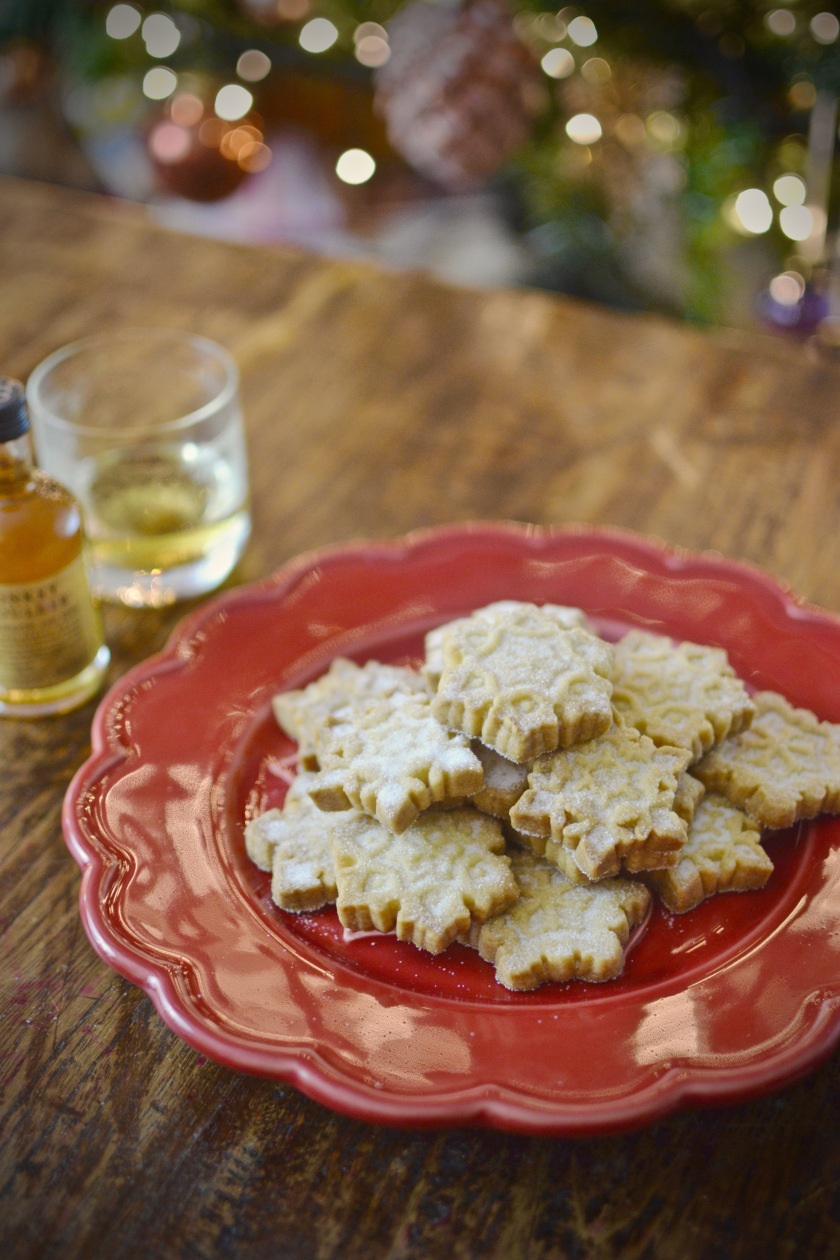
We have several traditions surrounding Hogmanay, or New Year’s Eve, in Scotland, many of which revolve around food or drink. One such tradition is the consumption of Shortbread.

I suspect it was made available at The Bells at midnight to soak up the whisky being knocked back. But, as a nation, we are known for our buttery, short biscuit the world over. Who hasn’t been given a garishly coloured tartan tin of the stuff from someone who has visited our dear land? I don’t really like the stuff. Well, the stuff in the tins and packages. Homemade is an entirely different beast, and everyone has their own recipe and preferences.
Most Scots will add rice flour or corn flour to their shortbread mixture. I am not one of them: I find it makes the biscuit too claggy when I eat it and it sticks to the roof of my mouth. My shortbread contains only three ingredients:
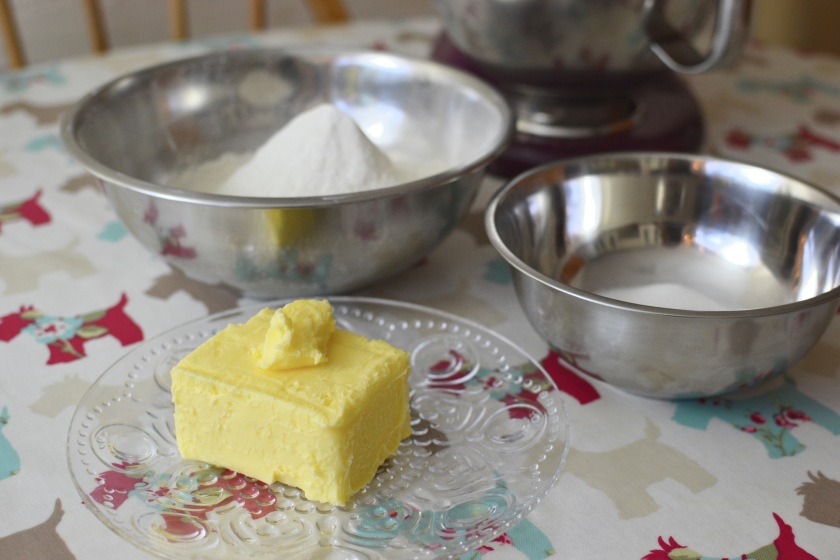
Salted Butter, Plain Flour and Caster Sugar

However, sometimes, I do make shortbread biscuits in cut out shapes, mostly hearts. But today, I cracked open a set of the most beautiful push cutters, in a snowflake design, that I snapped up in Lakeland a few weeks ago.
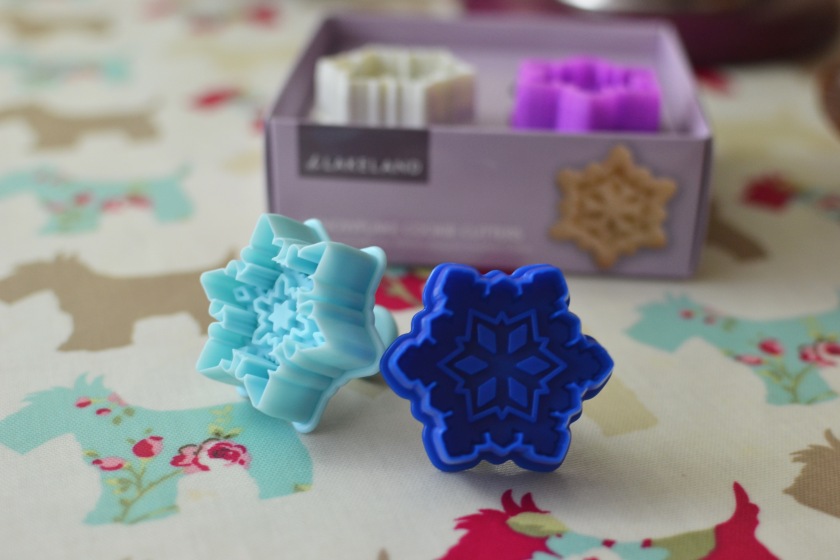
But, let’s get on with the recipe, and it really is very simple.
Cream 225g of Salted Butter with 115g of Caster Sugar until really light and fluffy. This is a crucial step in making really good Shortbread (in my humble opinion), so beat it hard.

Pale in colour, soft and fluffy in texture.
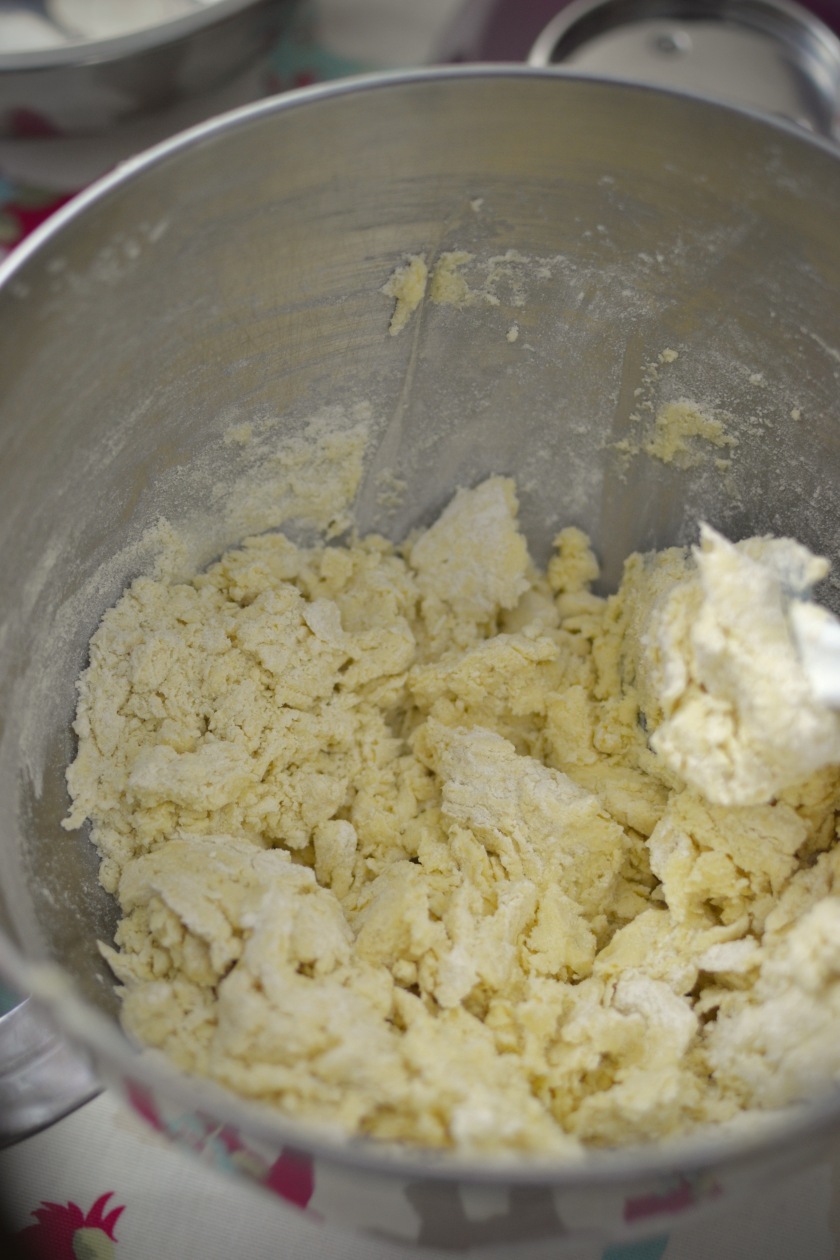
Keep working the mixture with a spoon or stiff spatula and it will come together to form a soft dough.
At this stage I half the mixture and bake them in two moulds. Today, I put one half aside in order to make small snowflake Shortbread biscuits.
In order to prepare your earthenware mould you must very lightly oil it (wipe off excess) using your finger tips or one of those oil mist sprays. Then, very lightly, sprinkle with flour before shaking it around the mould, then tipping out and blowing away any excess. You do *not* want lumps of oily flour ruining the details of your mould. The more you use the mould it will become more seasoned (one advantage to buying the moulds second hand on eBay).
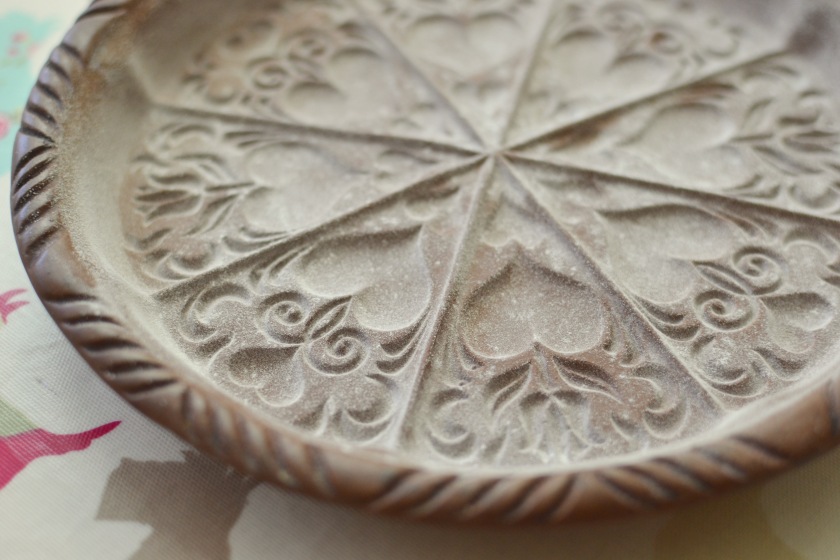
When it comes to filling the mould with the Shortbread Dough, it is simply a matter of squishing and squashing it down with your hands and fingers. The dough is soft and will be moved about easily.

Once you feel the dough is fairly evenly distributed use the back of a spoon to smooth and neaten the edges.

Finally, make lots of holes over the dough with a fork to discourage the dough from rising whilst baking.

Now it is time to bake it in a preheated oven at 190C (fan 170C) /375F /GM 5 for 20-25 minutes until it is a golden colour, but you will learn to smell when it is ready and it really does produce the most delicious sweet, buttery, homely scent.
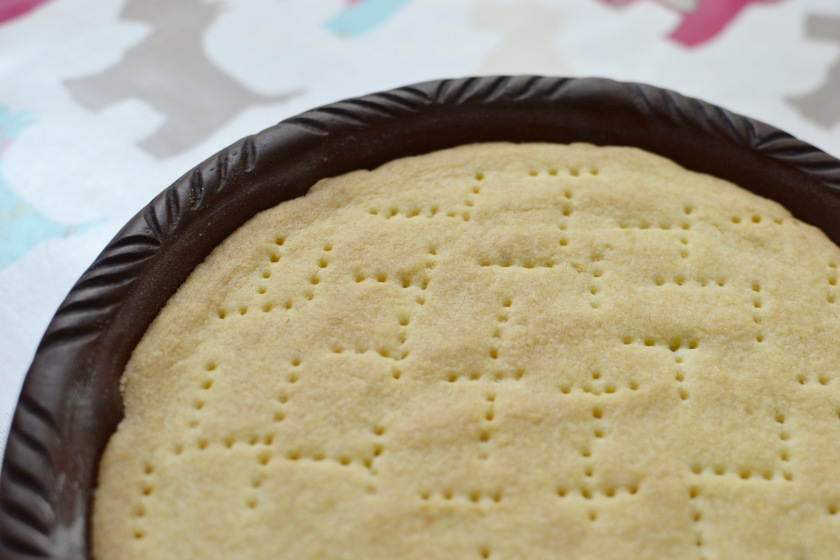
Leave the Shortbread in its mould for 10 minutes to cool a little, and only then can you turn it out. And, I have a short story to go with this. When I tell people that in order to get the Shortbread out of the mould they should lay out a tea towel, covered by a sheet of greaseproof paper, hold the mould upside down, about 20cm from the table, then unceremoniously drop the whole thing onto the greaseproof paper and tea towel, they think I have taken leave of my senses. Honestly, it works. I have never had shortbread stuck in the mould, nor have any of my moulds broken. They are very sturdy and this is the advice that Harstone give people. I promise.
So, in order to show you how this is done, I felt a video demonstration was required. I asked my partner if he would do the filming (just on my phone: nothing fancy), and he happily obliged. Except he filmed the wrong bit. He filmed me for two seconds before I dropped the mould onto the table, and then for a few seconds after it slammed onto the table, missing the entire action of me dropping it from a great height to show you how it’s done. Unfortunately, this was a one shot deal and my moment was gone. Ordinarily, I would have the second mould to empty, but I had made the other half of the batch into the snowflakes. So, I am sorry that I don’t have a video to post with this advice and description. I shall endeavour to record this action next time and load it up as a kind of postscript. 😉
As soon as the Shortbread is out of the mould, I sprinkle it generously with Caster Sugar, then allow to cool completely.

And now to the push cutter snowflakes. When I saw these for sale, I just knew they were going to produce the most beautiful biscuits. I had also envisaged them as Gingerbread biscuits and the tops of Mince Pies. I wasn’t disappointed at all.

Look at the fine detail.

I made 30 biscuits out of the half batch of dough.

I then chilled them for about 40 minutes to ensure that they kept their shape and detail in the oven. I baked them for about 8-10 minutes at 190C, but keep a close eye on them as Shortbread can catch so easily and quickly.
Once out of the oven, they were sprinkled with Caster Sugar whilst warm.
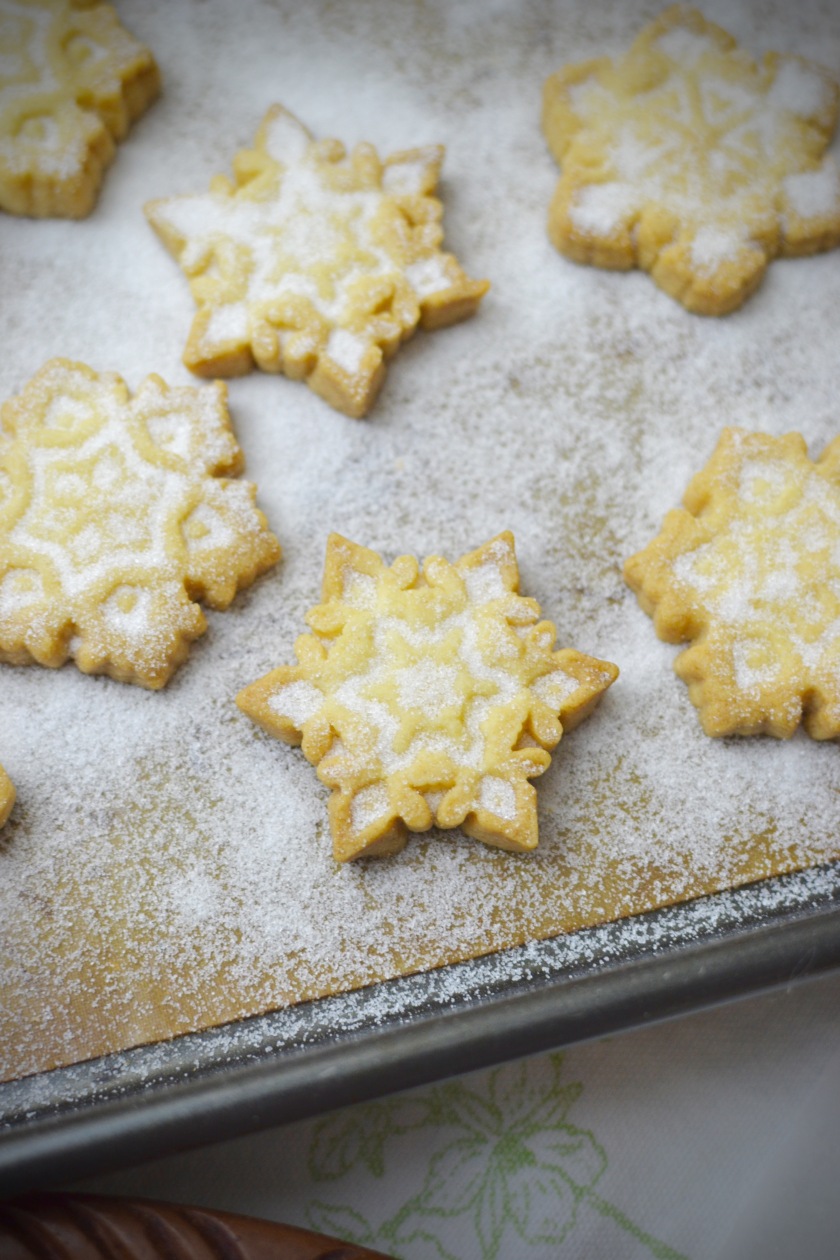
I am so happy with how they turned out and will be making great use of these new cutters for many Christmases to come.
If you are looking for something simple and quick to bake for Hogmanay or New Year’s day, then try out my Shortbread. You don’t need to use fancy moulds at all but I can guarantee once you start experimenting with them, you won’t look back. I suppose they are like the Bundt tins of the biscuit world. And if you feel like breaking away from tradition, you can always mix through chocolate chips to the dough, or dip them in melted chocolate once cooled. It’s a versatile biscuit that most people, especially children, love to nibble on.
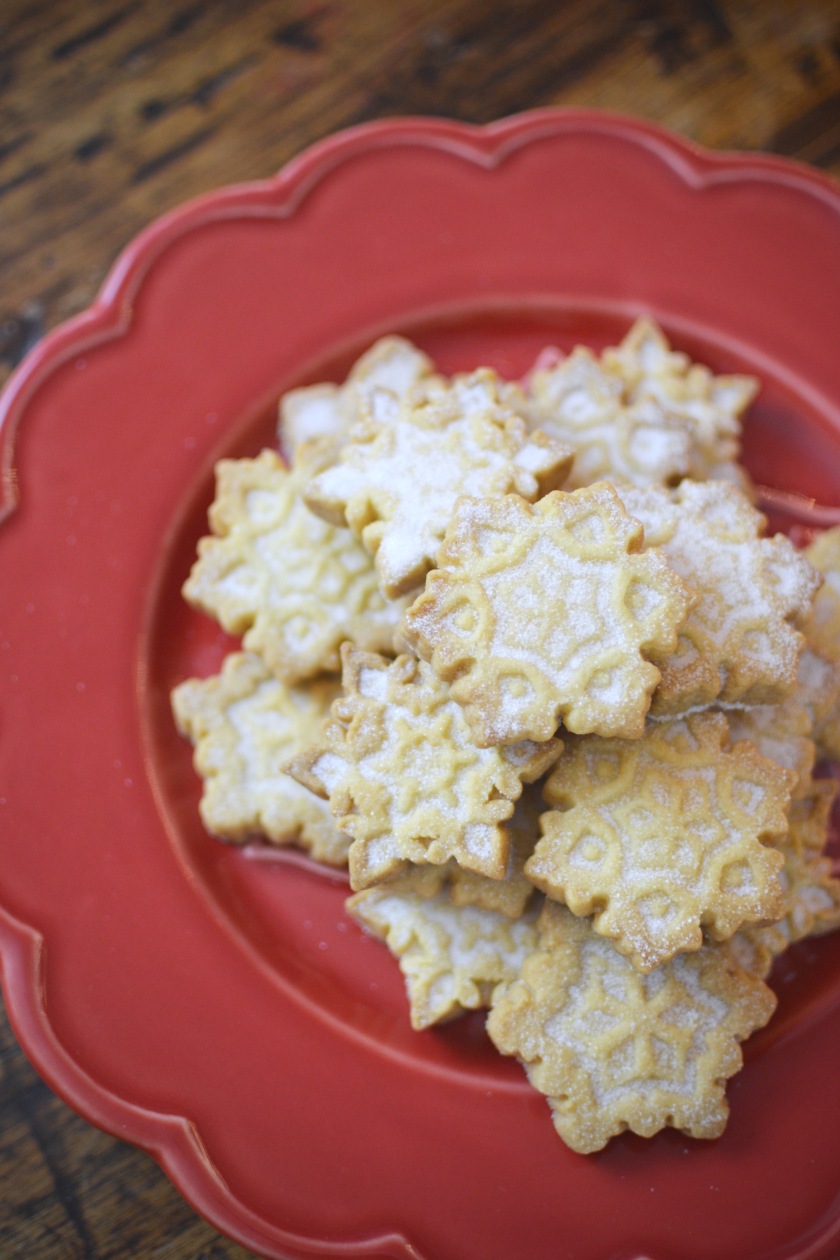
Have a very Happy New Year, filled with good health, happiness and the makings of great memories.
Frances
Absolutely beautiful Frances. Everything about this post. I had to chuckle at your man filming the wrong but – Hungry Hubby has so done that sort of thing for me over the years lol. I do need to see videographic evidence of this mould dropping though – my heart was in my mouth just reading about it!!
LikeLiked by 1 person
See? That’s why I needed to film it! I’ll try to make some again soon. 😂😂😂
LikeLiked by 1 person
Go on, force yourself 😉
LikeLiked by 1 person
I can tell you it won’t be today: food shopping; house cleaning; and cooking and baking for tonight and tomorrow will be today’s jobs. 😉
LikeLiked by 1 person
Oh tell me about it! I’ll be doing the same (if Hungry Hubby’s headache goes or I’ll be eating toast for dinner by myself 😦 )
LikeLike
I hope his headache goes soon. And if it doesn’t, still eat something celebratory! X
LikeLiked by 1 person
Happy Hogmanay to you to! Enjoy your celebrations! 🍾🍾🍾🍾🍽🍽🍽🍽
LikeLiked by 1 person
And to you guys too. Xxx
LikeLiked by 1 person
These look delicious, and beautiful! I could totally picture what you were doing to get the shortbread out of the mould, no video required (and I got a bit of a laugh out of it too!)
LikeLiked by 1 person
😂
LikeLike
Love this step by step
LikeLiked by 1 person